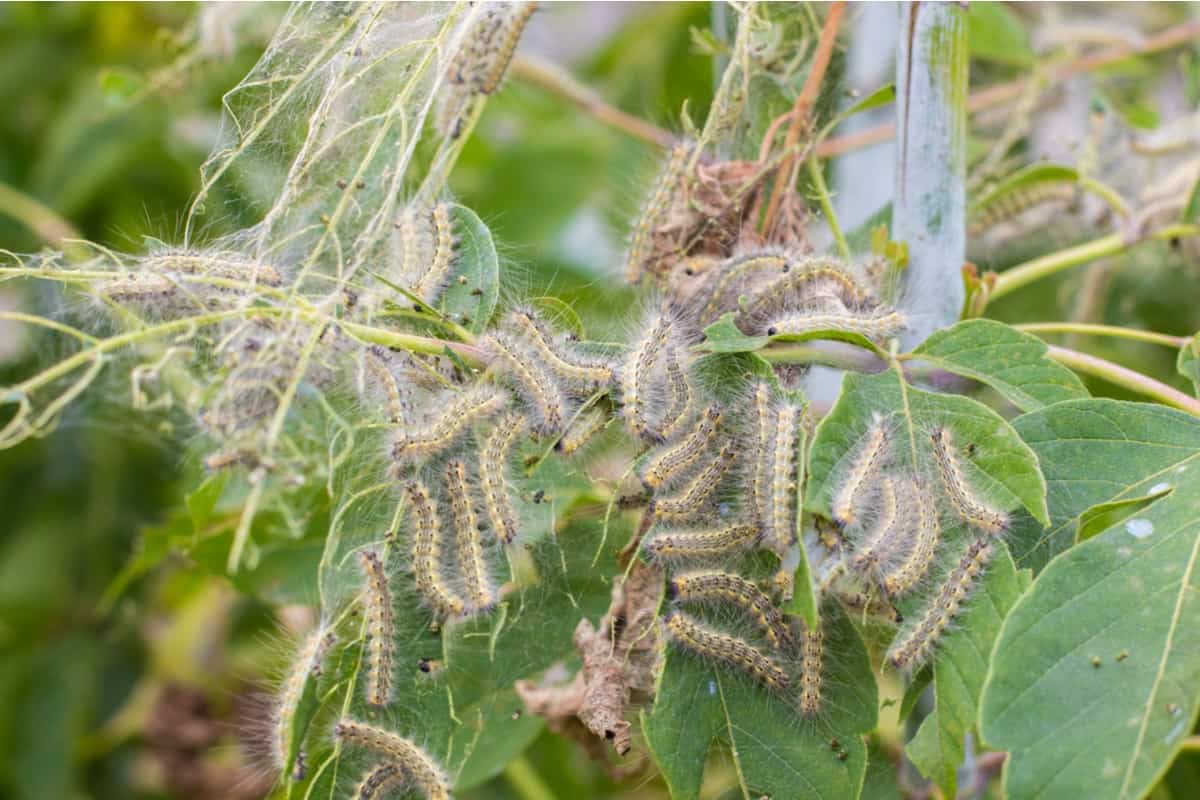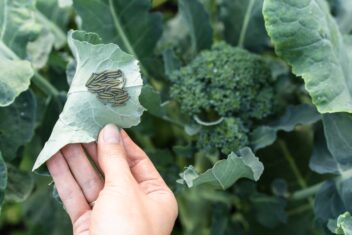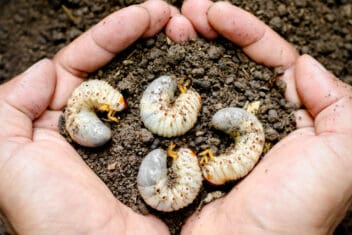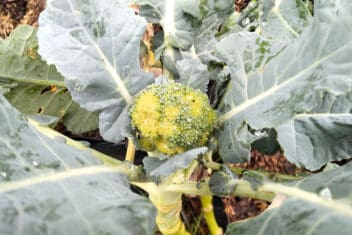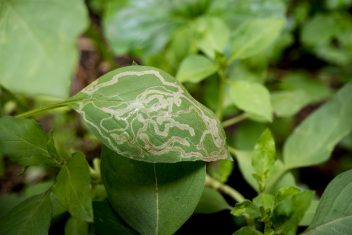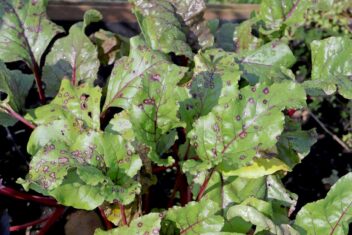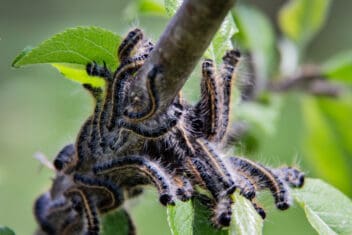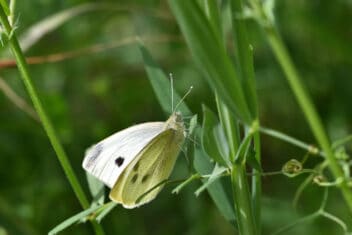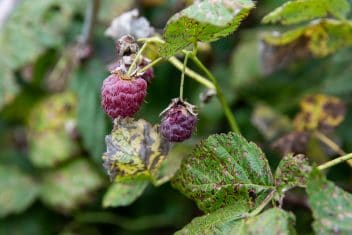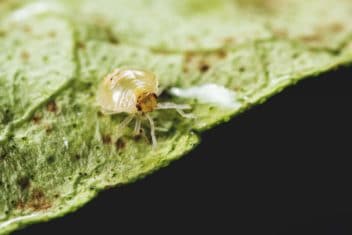This year, gypsy moth caterpillars have been a major problem where I live.
Much of the local economy around here focus on maple syrup production, and since gypsy moth caterpillars are so interested in feeding on maple trees in particular, this has been a huge setback for maple producers.
Until this year, the gypsy moth caterpillar wasn’t something I had ever heard of. However, it’s pretty widespread, affecting trees in just about every US state as well as much of Canada.
Here’s what you need to know about this destructive pest – and how you can keep your trees and plants protected.
What Are Gypsy Moth Caterpillars?
Gypsy moth caterpillars are annoying pests in rural and urban areas along with forested places. It’s not the moth version of this pest that is so frustrating to deal with but instead the caterpillars, who are at the immature “larval” stage.
These caterpillars feed primarily on tree leaves, with oak being the favorite species (though they’ll eat many other kinds of trees and plants, too).
In some cases, infestations are so intense that trees are completely defoliated, with most feeding occurring in the spring and early summer. They create red-brown cocoons late in the summer months and by August, the caterpillars have developed into moths. When the moths emerge from the cocoons in July or August, they live for just a few days (long enough to reproduce) but do not feed on trees.
The egg masses are laid in July or August, overwinter, and then hatch the following spring to repeat the cycle all over again.
What Plants Do They Affect?
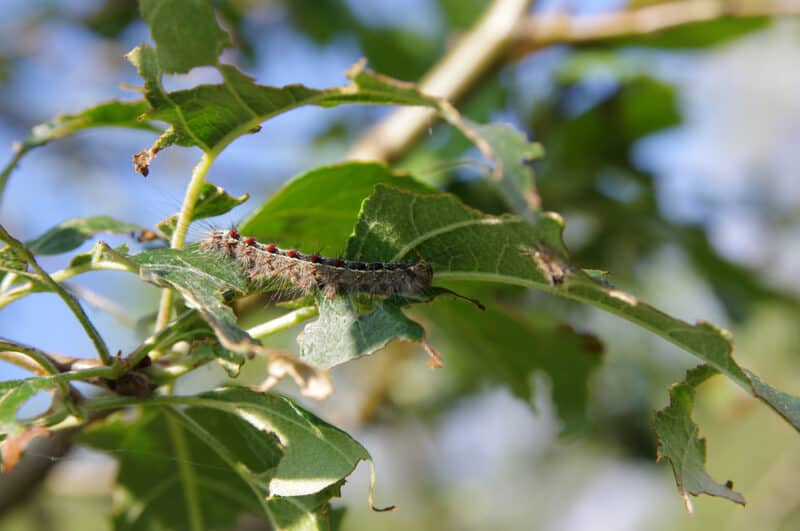
These creatures feed on more than 300 species of trees, particularly oaks, maples, aspen, apple, birch, basswood, willow, and more.
Favored species include:
- Oak
- Willow
- Aspen
- Apple
- White birch
- Tamarack
- Witch hazel
- Basswood
- Mountain ash
- Linden
- Pine
- Spruce
- Maple
- Walnut
- Hickory
- Chestnut
- Hemlock
- Cherry
- Elm
- Black and yellow birch
- Beech
- Cottonwood
- Ironwood
- Boxelder
Normally, caterpillars will avoid the following:
- Dogwood
- Sycamore
- Catalpa
- Tulip poplar
- Red cedar
- Scotch pine
- Locust
- Balsam fir
- Green, black or white ash
Signs of a Gypsy Moth Caterpillar Infestation
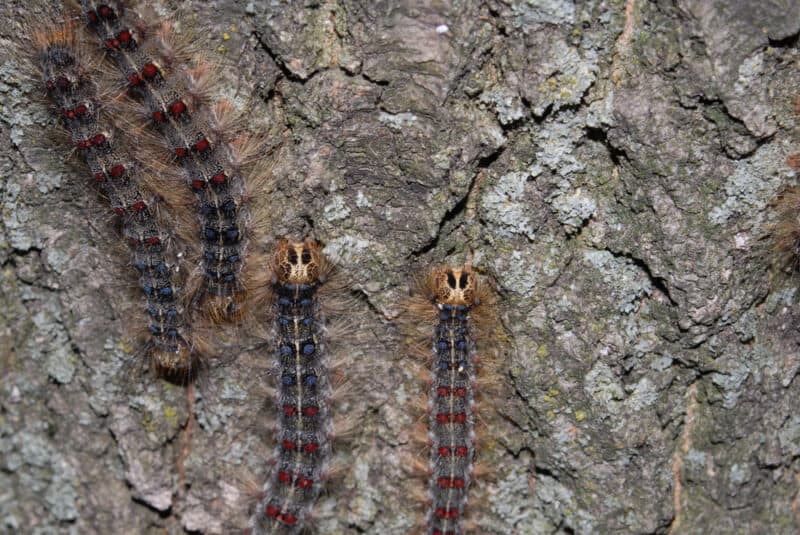
You’ll know that gypsy moth caterpillars are attacking your trees if you have the following symptoms.
The first is actually seeing the large, hairy caterpillars on the tree. These are pretty easy to identify – they have pairs of blue and red spots along their back along with long, dark hairs.
They can feed at any time throughout the spring or summer months, but the most active periods for these pests are from mid-to-late May until July.
Gypsy moth caterpillars eat tree leaves, gnawing away until a tree is partially or even completely defoliated. This is one of the most obvious signs of a gypsy moth caterpillar infestation – if a tree once had leaves and no longer does, it could be these pests to blame!
1. Other Tree Pests Similar to Gypsy Moth Caterpillars
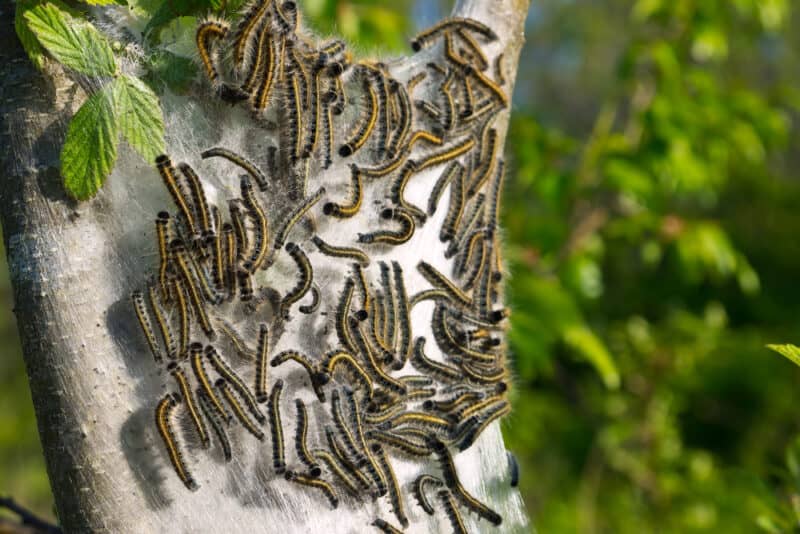
This is one of the easiest ways to differentiate these caterpillar pests from another common type of tree pest – the Eastern tent caterpillar. This latter species also feed in the spring and summer, but it’s different in that it rarely causes noticeable amounts of defoliation. Plus, you’ll notice the silky tents that these caterpillars form in trees.
The same goes for the fall webworm, another insect that feeds on trees (but in the late summer and fall) and creates silk webbing. Again, although these pests can make your trees look a bit on the unattractive side, they rarely cause complete defoliation.
2. Defoliation is Extensive
A tree that has been feasted upon by gypsy moth caterpillars may look as though it’s dead. However, it’s usually not. It will produce a second set of leaf buds and “leaf back out” by the middle of the summer. This second set of leaves should give your tree enough energy to get through the summer and impending winter – that’s the good news.
The bad news is that this kind of extensive severe defoliation can really stress a tree. As long as your tree is mostly healthy, it should be able to weather this storm – but if there are other stress factors involved, like drought, disease, or adverse growing conditions, your tree could die.
Some tree species, particularly conifers, can’t handle this kind of extensive defoliation. They often die from heavy gypsy moth caterpillar infestations. Luckily, gypsy moth aptera rarely feed on conifers unless populations are extremely high and other preferred tree species have already been consumed.
Preventing Gypsy Moth Caterpillars
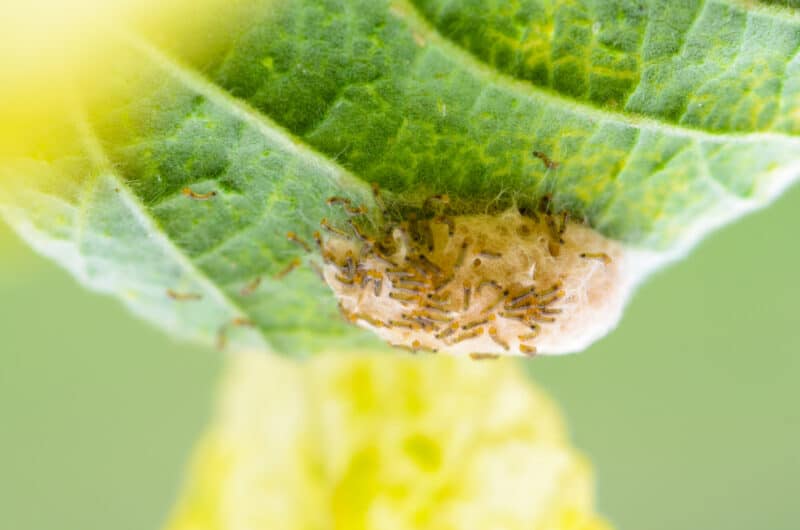
There are a few ways you can prevent gypsy moth caterpillars from destroying your trees. Here are some of the best options.
1. Search for and Remove Egg Masses
It won’t do you any good this year to remove egg masses, but the work you do now can help prevent a gypsy moth caterpillar infestation next spring.
This summer and fall, check your property for egg masses. They might be on the trees themselves or even on surfaces like firewood or outdoor furniture.
When you find them, scrape the egg masses into a bucket filled with soapy water. You can also bury or burn them. Whatever you do, just don’t leave them lying around – winter weather won’t kill them and they will hatch the next spring.
2. Pheromone Traps?

Some people swear by using pheromone traps to eliminate gypsy moth caterpillars, but sadly, these are really only meant to detect the presence of these pests and not to kill them. You can use pheromone traps to get an idea of where there might be caterpillars hanging around, but don’t expect them to go away without other interventions.
3. Keep Things Clean
Keep your yard as clean as possible. This won’t necessarily help to cut down on the number of gypsy moth caterpillars, but it may help you detect egg masses easier.
4. Introduce Natural Enemies
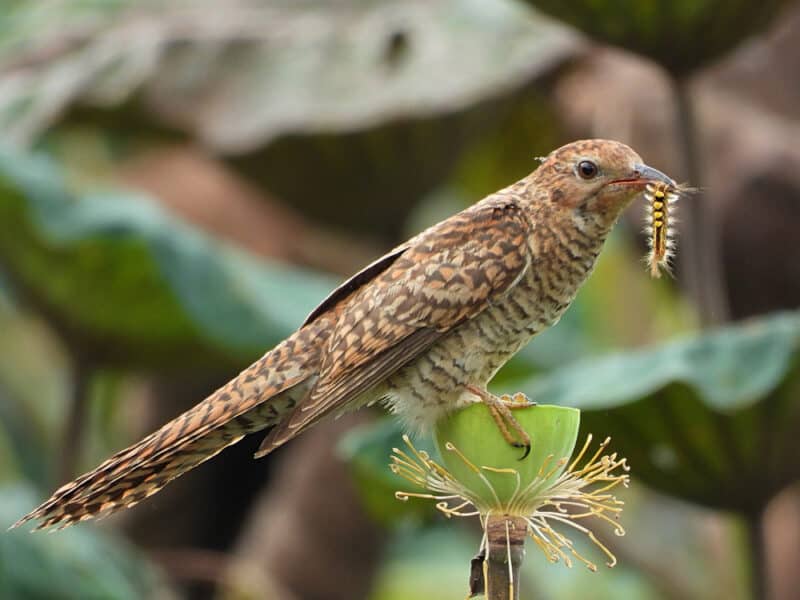
Consider introducing a few natural enemies (or encouraging them to visit) to prevent gypsy moth caterpillars. Some of the most common include birds, mice, and various predatory insects. These feed on gypsy moths at various life stages – there are even insect parasitoids that attack gypsy moth eggs, pupae, and caterpillars.
Avoid using broad-spectrum insecticides so you don’t accidentally kill these parasitoids or insects. Also, make your landscape a suitable environment for birds and other natural predators by adding water features, putting out birdseed, and taking other steps to make your garden wildlife-friendly.
5. Use a Barrier
You can buy a commercial barrier to place around tree trunks to curtail the movement of the caterpillars into the tree canopy. However, a simpler solution that many people rely on is to just wrap the trunks of trees (toward the base) with layers of double-sided duct tape.
The theory here is that the caterpillars will get stuck in the tape and won’t be able to work their way up to the canopy. It can be effective, but may need to be reapplied often.
How to Get Rid of Gypsy Moth Caterpillars
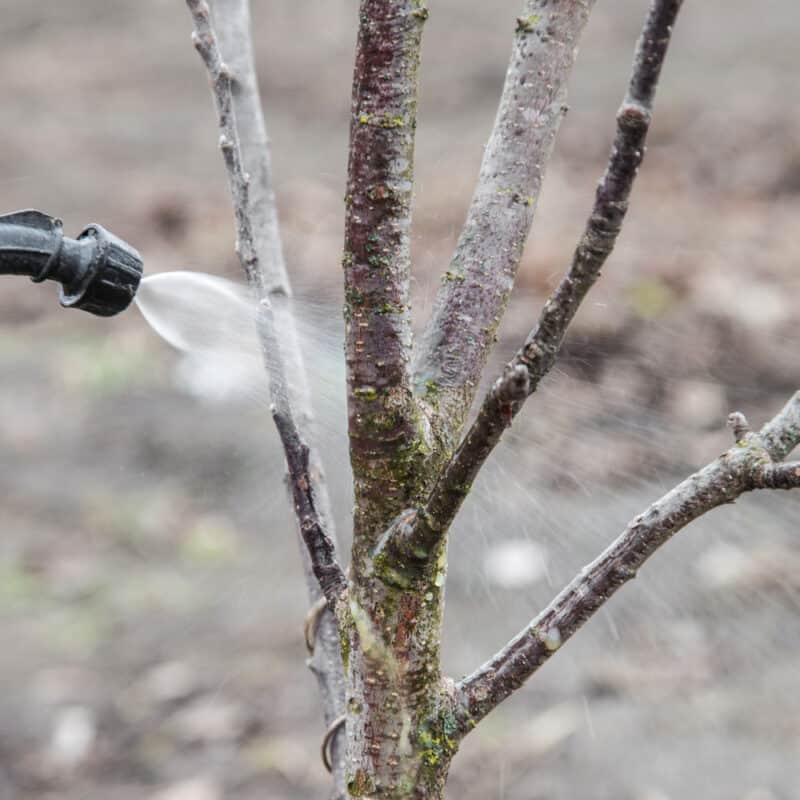
It is very difficult to get rid of gypsy moth caterpillars but there are some steps you can take.
One of the most popular routes is to spray Bt. Bt, or Bacillus thuringiensis var. Kurstaki, is a spray that can be applied to the leaves of trees a week or two after eggs have hatched. Bt is most effective against young caterpillars and the caterpillars must consume it for it to be effective.
It isn’t harmful to humans or other animals, so it’s a good idea to spray trees with this if you have a choice. Most insecticides won’t do much against gypsy moth caterpillars and they can kill beneficial insects and pollinators in the process.
Ultimately, the only thing that is known to kill these caterpillars each year is a viral disease named nucleopolyhedrovirus virus, or NPV. This virus affects caterpillars and usually causes outbreaks to collapse after 2-3 years of heavy defoliation. There is a similar type of fungus, Entomophaga maimaiga, that can kill large numbers of caterpillars.
The good news is that you don’t need to do anything at all to let these natural controls take effect – you just need to stay patient! While spraying Bt and attempting the other preventative measures above can help lessen the impact of a gypsy moth caterpillar infestation, the best thing you can do while you wait for Mother Nature to take over is to keep your trees and other plants healthy.
After all, a gypsy moth caterpillar infestation rarely kills a tree – unless the tree was already weakened, to begin with. So make sure your trees have the nutrients, water, and other care they need, and you should be able to help them weather the storm!
